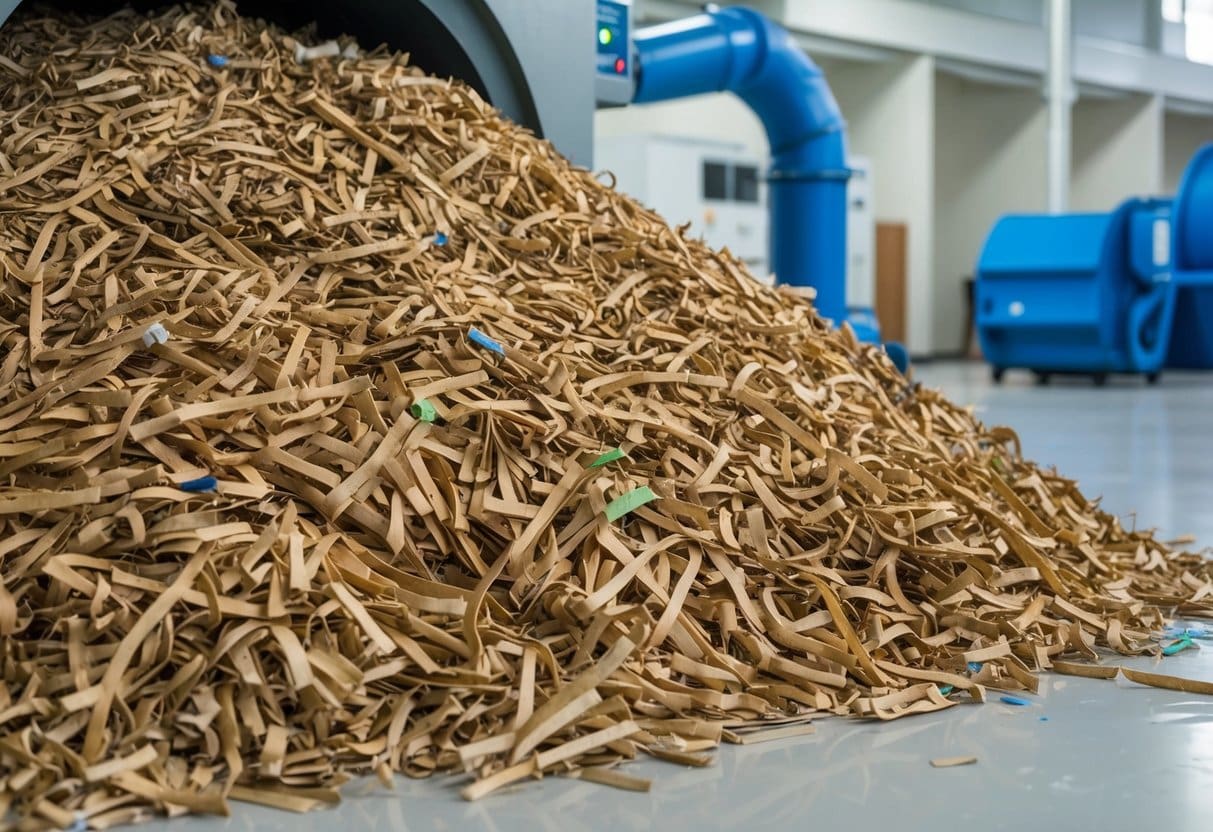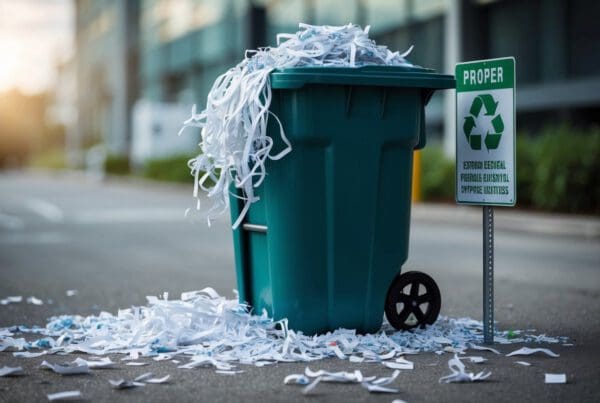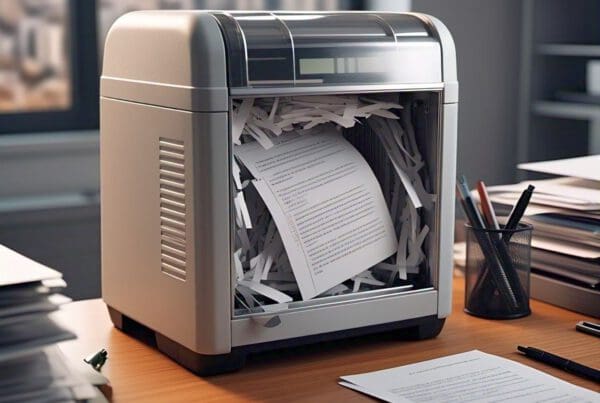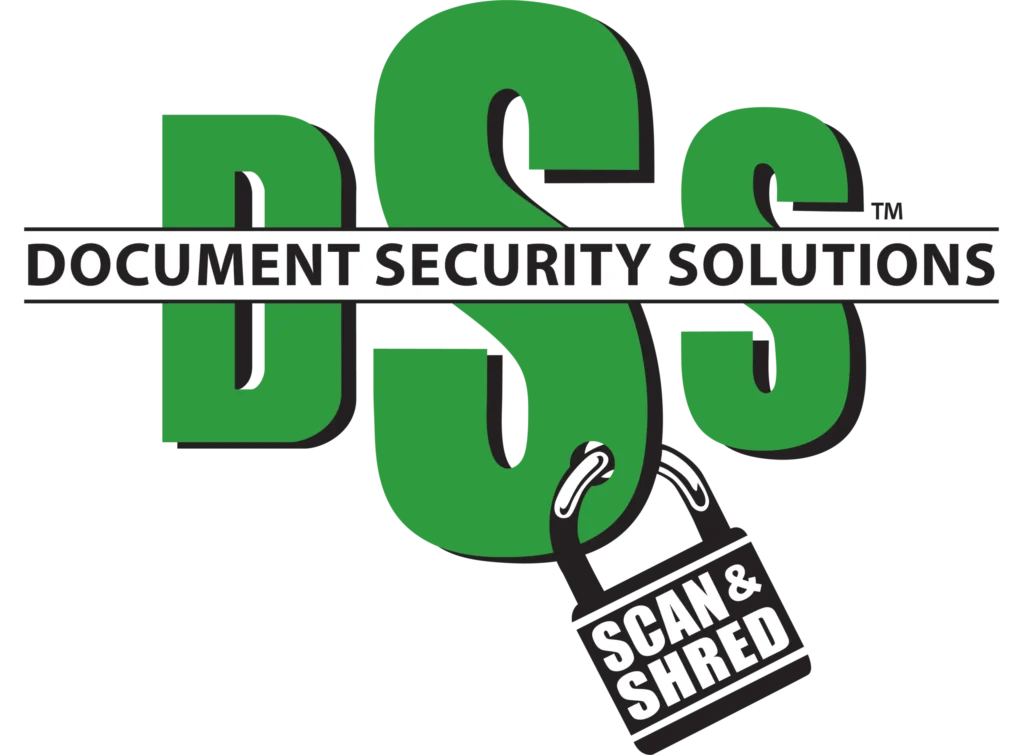Understanding the Impact of Paper Shredding on the Environment

Paper shredding plays a crucial role in reducing waste sent to landfills and conserving natural resources. It can help minimize the environmental footprint through recycling and efficient waste management.
The Lifecycle of Paper and Environmental Implications
Paper starts as trees cut down in forests. Deforestation reduces habitats and affects climate regulation. Paper production uses significant water and energy, increasing the carbon footprint. This process releases greenhouse gas emissions, affecting our environment.
After usage, many papers end up in landfills. Here, they decompose and release methane, a potent greenhouse gas. Efficient recycling and waste management through shredding can decrease these emissions. By shredding paper, we aid the cycle of paper production by making it easier for recycled paper to be reused.
Paper Shredding and Landfill Reduction
Shredding paper reduces bulkiness, allowing more efficient storage and transport for recycling facilities. Shredded paper takes up less space, lessening landfill contributions. This practice aids in waste management by streamlining the recycling process.
Through shredding, we ensure energy conservation since shredded paper requires less processing than whole sheets. This reduces energy use at recycling plants. Shredded materials are easier to handle, resulting in decreased water consumption during recycling. This practice not only diverts paper from landfills but also retains valuable natural resources for future use.
The Role of Shredding in Environmental Sustainability
Shredding paper not only protects our privacy but also supports environmental sustainability. It plays a part in reducing carbon emissions and works hand in hand with recycling efforts.
Reducing Carbon Emissions through Sustainable Shredding
When we choose sustainable shredding practices, we actively reduce carbon emissions. Many shredding companies use energy-efficient machines powered by renewable energy sources, cutting down on greenhouse gases. It’s important that we focus on these eco-friendly processes to fight climate change.
Sustainable business practices, such as using machines that consume less energy, directly impact our carbon footprint. This attention to efficiency ensures that the shredding process contributes positively to environmental goals. By partnering with facilities that prioritize environmental standards, we can make shredding a greener practice.
Shredding and Recycling: Partners in Conservation
Shredding supports recycling by preparing paper for reuse. Once paper is shredded, it becomes easier to transport and process at recycling facilities. This partnership between shredding and recycling is crucial for environmental sustainability.
Recycling shredded paper turns waste into new products, supporting a circular economy. This reduces the need for raw materials and minimizes landfill waste. By engaging in shredding and recycling, we play a role in conserving resources and promoting sustainable practices.
In addition, this cooperation can lead to significant environmental benefits, like decreased deforestation and reduced energy consumption in the production of new materials. Adopting these practices helps us move toward a more sustainable future, where resources are used responsibly.
Incorporating Shredding Into Waste Reduction Strategies
Adopting paper shredding in our waste management efforts helps reduce landfill waste and supports eco-friendly practices. By doing this, we contribute to sustainable shredding initiatives that align with our environmental goals.
Advancing Corporate Sustainability Initiatives
Incorporating shredding into our sustainability plans is crucial for reducing paper waste. We must emphasize responsible document disposal to uphold our commitment to environmental benefits. Shredding paper not only protects sensitive information through document destruction but also promotes corporate sustainability by turning waste into recyclable resources.
Many companies find success by combining shredding activities with existing waste reduction measures. Implementing a shredding program improves our sustainability profile and demonstrates our environmental responsibility. Furthermore, shredded paper can feed into recycling programs, helping us meet our corporate sustainability objectives.
The Importance of Recycling Programs and Secure Destruction
Recycling programs play a key role in shredding strategies. Recycling shredded paper reduces overall landfill waste and is a vital step in our waste reduction efforts. By securely destroying documents, we maintain privacy while ensuring materials get a second life.
A successful program depends on understanding the link between shredding and recycling. Eco-friendly practices involve coordinating between document destruction and recycling. We should make shredded paper accessible for recycling facilities, turning it into new products. This approach supports secure disposal and reduces our environmental impact.
Protecting Information and the Environment
We need to ensure that personal data is secure while also caring for our planet. Paper shredding helps protect sensitive information and supports environmental efforts through responsible recycling.
Balancing Data Security with Environmental Responsibility
In our digital age, it’s easy to overlook the physical documents that still hold sensitive information. Important papers like bank statements or medical records can be at risk if not properly destroyed. This is where document shredding plays a vital role. It offers secure destruction by cutting papers into small, unreadable pieces, ensuring data security and preventing unauthorized access.
Professional shredding services and mobile shredding options make this process more convenient. By using drop-off shredding, we can handle large amounts of documents efficiently and responsibly. Many shredding services also prioritize recycling, meaning the shredded paper is reused instead of being dumped in landfills. This practice supports both security and environmental goals.
The Interconnection Between Identity Theft Prevention and Environmental Care
Secure destruction of sensitive documents is a key factor in preventing identity theft. When we throw away intact documents, they can be picked up and misused. Professional shredding services ensure materials are destroyed, removing this risk. Identity theft often originates from discarded information, so by shredding documents, we safeguard our personal data.
At the same time, choosing services that recycle helps our environment. The paper is turned back into usable products, reducing waste. By linking identity protection with eco-friendly practices, we fulfill both responsibilities. This combination emphasizes the importance of choosing services that offer both security and sustainability, allowing us to protect ourselves and our world.
Adopting Environmental Conservation Through Shredding
Shredding paper can play a vital role in protecting our environment by reducing waste and aiding recycling efforts. By managing paper waste smartly and encouraging awareness, we can lessen our environmental footprint.
Implementing Efficient Paper Waste Management
When we implement efficient paper waste management, we help protect natural resources. Every ton of recycled paper saves about 17 trees and uses 50% less water. By partnering with shredding services that prioritize recycling, we ensure that shredded paper is transformed into new products, reducing the demand for virgin materials.
Efficient shredding practices help us reduce our waste output significantly. Regular audits of our shredding processes can identify opportunities to minimize waste and improve recycling rates. Additionally, separating paper waste at the source and using appropriate bins can streamline the recycling process.
Promoting a Culture of Environmental Consciousness
We can build a culture of environmental consciousness by raising awareness about the benefits of shredding and recycling. Encouraging discussions about environmental conservation and corporate social responsibility helps us engage others in promoting sustainable practices. Sharing success stories can inspire change and foster community involvement.
Workshops or seminars are effective ways to educate employees or community members on the importance of shredding and recycling paper waste. Incorporating these activities into corporate responsibility plans can motivate us to prioritize environmental conservation. Through these efforts, we empower everyone to make conscious choices that contribute to a healthier planet.





